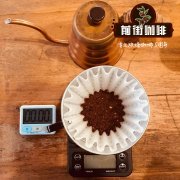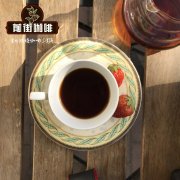Coffee powder fine type and main uses of ground particles of coffee suitable for how to brew?

Professional coffee knowledge exchange more coffee bean information please follow the coffee workshop (Wechat official account cafe_style)
The purpose of grinding coffee beans and the types and main uses of coffee powder
The reason why coffee beans are ground into powder before use is to make it easier to extract the ingredients from coffee beans. Grinding beans can increase the surface area of coffee beans by thousands of times, so that coffee can be made in a short time.
What grain size should coffee beans be ground to? How to define the size and thickness?
One of the criteria is the comparison of granulated sugar provided by the Coffee Fair Trade Agreement.
The way
Roughness grinding means that the particles are larger than coarse sugar.
Moderate grinding is the degree of white sugar.
The fineness grinding size is between white sugar and fine sugar.
The size of medium fineness grinding is between medium grinding and fineness grinding.
Extreme fineness grinding is a finer degree than fineness grinding.
The size of coffee powder will affect the extracted ingredients and filtration speed, that is to say, each tool and extraction method has its own suitable coffee powder size.
Extremely fine grinding is mainly used in espresso machine.
Fineness grinding is often used in the simpler type of extraction (ear-hanging type).
Medium fineness grinding to medium grinding is suitable for filter paper drip filtration and wind kettle.
For roughness grinding, it is recommended to use French filter kettle.
◎ degree of grinding (grinding coefficient)
The thickness of coffee powder is called 'grinding degree' or 'grinding coefficient'.
Usually, many people think that coffee powder is coffee powder.
But I didn't notice that even the coffee powder
If you use different brewing coffee utensils
Coffee powder also needs to be matched with different thicknesses.
If the coffee powder does not make a proper match of thickness and thickness
Will lead to uneven extraction.
The loss rate of fine powder is faster than that of coarse powder because of the loss of water.
On the other hand, the time of extraction will be different.
Finer powders will be over-extracted because they are soaked in water for too long.
The coarser powder will result in insufficient extraction due to insufficient soaking time in water.
So the degree of grinding (grinding coefficient) has a more subtle effect on the quality of coffee.
Can not be ignored!
The range of grinding degree (grinding coefficient) can be roughly divided into several types:
● espresso grinding Espresso Grind
More suitable for using espresso machine
The fineness of the degree of grinding (grinding coefficient) is quite sensitive.
● Turkish grinding Turkish Grind
More suitable for Ibrik pot
This kind of appliance is quite rare in China.
However, this kind of coffee utensils are often found in some European countries.
● rough grinding Coarse Grind
More suitable for filter kettle
Grinding Medium Grind in ●
More suitable for trickling filter pot or air stopper (siphon pot)
● fine grinding Fine Grind
More suitable for curling kettle or mocha kettle
Maybe ordinary people still don't know how to make a distinction between thickness and thickness.
If you have a grinder at home (more suitable for a grinder with 10 scales)
The number on the dial can be used as a reference for the degree of grinding (grinding coefficient):
(1) scale 1: 1. 5 → is suitable for using espresso machine Espresso
(2) scale 2 / 2. 5 → is suitable for using ice drip teapot & mocha kettle
(3) the scale is 3-3. 5 → is suitable for trickling filter pot (cooler pot) & plug air pot (siphon pot) & American coffee pot & Belgian Vienna pot
(4) scale 3. 5-4 → is suitable for French filter kettle
Through the above scale, it should be at the time of grinding.
The degree of grinding (grinding coefficient) can be used more accurately to match the coffee utensils used.
So when you hear that the more detailed you are, the stronger you are.
Then it can be said that this statement is wrong.
That's what I often hear.
However, after getting to the bottom of these error messages,
Salespeople who mostly come from commercial coffee.
Or a so-called counselor in a commercial coffee shop chain
Or the wrong message about coffee with a little knowledge.
The degree of grinding (grinding coefficient) is absolutely necessary to match the coffee utensils used to brew!
For example:
When it comes to brewing coffee in an American coffee maker
The degree of grinding with a strong taste (grinding coefficient) should be adjusted to scale 3 at most.
If the adjustment is lower than the scale 3, then the extraction will be uneven.
END
Important Notice :
前街咖啡 FrontStreet Coffee has moved to new addredd:
FrontStreet Coffee Address: 315,Donghua East Road,GuangZhou
Tel:020 38364473
- Prev

The Grinding Particle size of hand-made Blue Mountain Coffee recommended that the grinding degree of small Fuji bean grinder coffee is 4 degrees.
Professional coffee knowledge exchange more coffee bean information please follow the coffee workshop (Wechat official account cafe_style) daily brewing: filter cup choice: V60 filter cup, kalita fan and KON0 parameters: 15g powder, water temperature 90 degrees, grinding 3.5, water powder ratio close to 1:15, total time about 2:00 manipulation: 25-30g water steaming, steaming time is 30s, the first stage water injection to 120s
- Next

What is the particle size of using a coffee machine to make a latte? different coffee machines should use different grinding degrees.
Professional coffee knowledge exchange more coffee bean information please follow the coffee workshop (Wechat official account cafe_style) 1. When brewing coffee with a coffee machine, what should be the ratio of water capacity to coffee powder capacity? 2. What should be the proportion of brewed coffee to cream and sugar? 1. What kind of coffee machine is it? Italian coffee maker, American dripping coffee
Related
- What is the Philharmonic pressure? How to use Philharmonic pressure to make delicious coffee
- Why does a hand grinder have more fine powder than an electric grinder?
- In addition to the hot mom, what is the difference between the versions of EK43 | ditting and Mahdi ek43?
- What kind of equipment do you need to make coffee by hand? Introduction to novice starter cooking equipment tools
- Espresso needs to be ground how thick and thin scale entry Italian Coffee Machine Bean Grinder investigation and Grinding course
- How much does it cost to open a small private cafe? How much does it cost to learn coffee? How to operate it?
- The difference between the flavor characteristics of hand-brewed coffee and coffee maker is hand-brewed coffee really better than coffee maker? Can I use a coffee machine to make coffee beans by hand?
- The difference between 01 and 02 of hario v60 filter cup what is the difference between 01 and 02 filter cup opening and cooking flavor
- What's the difference between the smart cup and the French kettle? Which is better, the French kettle or the Smart Cup?
- What's the difference between a smart cup and a V60 filter cup? The difference between the taste of smart cup and hand-brewed coffee

